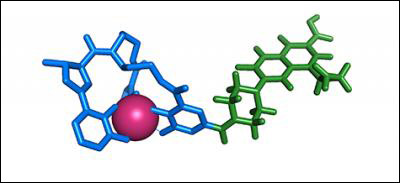New drug delivery system turns bacteria against itself
Researchers at Washington University in St. Louis are developing a new drug delivery system that uses bacterial siderophores to identify the pathogen causing infection and direct treatment, according to a university press release.
“Today when you walk in with the symptoms of a bacterial infection you are treated with a broad-spectrum antibiotic because we lack the ability to identify a bacterial strain quickly,” Timothy Wencewicz, PhD, assistant professor of chemistry, said in the release. “And that means every type of bacteria in your body is exposed to that antibiotic.”
As a result, the researchers are working to develop a type of personalized antibiotic therapy.
According to Wencewicz, bacteria make and secrete siderophores to scavenge iron in their environment. Competing bacteria will often attach toxins, or sideromycin, to these molecules, killing other bacteria that absorb them. In a similar fashion, Wencewicz and colleagues plan to attach antibiotics to these “scavenger” molecules to deliver the drugs to the bacteria. This process would require lower doses of antibiotics.

Figure 1. A hypothetical “Trojan Horse” drug would consist of a siderophore (blue) linked to an antibiotic, in this case the broad-spectrum antibiotic ciprofloxacin (green). Many bacteria have evolved resistance to ciprofloxacin in recent years, leaving it less effective than it once was. Attaching it to a siderophore might make the antibiotic useful again because bacteria pump siderophores inside their cell membranes where they can do maximum damage.
Source: Washington University in St. Louis/Alfred BE. ACS Chem Biol. 2013;8:1882–1887.
In addition, the siderophore system is specific to each bacterium, which can be used to identify the pathogen causing an infection and direct more effective treatment. More than 500 types of siderophores are known, but there may be tens of thousands yet to be identified. This type of personalized therapy can cut down on antimicrobial resistance, according to Wencewicz.
“Because of resistance, we really need to discover new approaches to antibiotic development and not just continually re-jigger existing drugs,” Wencewicz said. “The siderophore pathway offers the opportunity to completely re-imagine antibiotic development so that it takes resistance into account up front instead of on the back end.”
